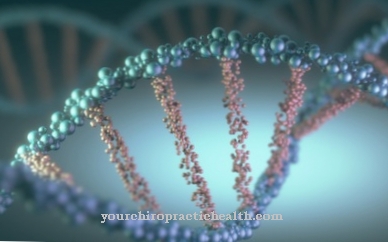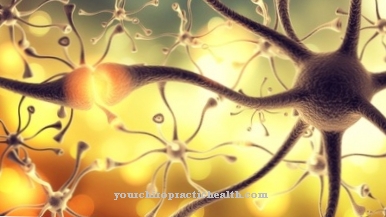Under the term erection - Latin also ergio, which means something like arousal or erection - the doctor describes a stiffening of the male genitalia. The penis becomes stiff as a result of various mechanical or psychological stimuli.
Most of all, the stiffening occurs due to sexual arousal. The blood flow into the penis is increased and at the same time a blood flow from the erectile tissue is restricted so that the penis can become or remain stiff. The stiff penis is the prerequisite for penetrating sexual intercourse.
What is an erection?

Arousal takes effect before an erection occurs. This excitement is a whole-body feeling of wellbeing. The man notices muscle tension; as a result, the blood flows into the genitals. The penis becomes stiff, the scrotum begins to tense and the testicles are pulled slightly upwards.
With uncircumcised penises, the foreskin slides back so that the glans becomes visible. In addition to the blood pressure, the pulse also rises; the blood is then transported to the penis. This causes the head of the penis to turn dark red.
In the further course the vessels in the penis shaft become visible. The whole body is under tension; accelerated breathing can also be perceived. This is followed by orgasm and ejaculation.
After the man has experienced his orgasm, the so-called relaxation phase occurs. A comfortable body feeling spreads; the erection decreases, the pulse becomes regular, and the blood pressure returns to normal.
Function & task
In order for an erection to take place, an extremely complex interplay of messenger substances, nerve stimuli as well as blood circulation and muscles is responsible. All of these factors enable - in perfect harmony - an erection.
The penis - when flaccid - is supplied by three cavernous bodies that contain only an extremely small amount of blood. These are contracted cords of smooth muscle found in the arteries. Because of this, it is possible that not too much blood is pumped into the erectile tissue in the stiff state.
The erection is controlled by the sympathetic nervous system. The sympathetic system is a so-called nerve plexus that radiates from the upper thoracic spine area to the genital region. If the man is sexually aroused with words, pictures or even touch, the brain automatically sends messages. This is the "erotic stimulus".
Then the parasympathetic - the "opponent" of the so-called sympathetic - takes control. It sends the flow of information between the spinal cord and the genital area. Since the penis has very sensitive nerves, the sexual stimulus can be processed and passed on immediately in the lumbar spine if it is touched directly. The feeling is strengthened and intensified.
As a result, a chemical reaction chain is triggered that is triggered by the nerve signals. First nitric oxide, then cyclic guanine monophosphate is released. These messenger substances activate the protein kinase G.
Then the process of erection begins: the veins begin to widen, the blood then flows directly into the erectile tissue and causes the penis to swell. Due to the excess of blood, the smaller veins that are located directly in the penis are squeezed. This automatically prevents the blood from flowing out. The erectile tissue suddenly has 40 times more blood than in a non-erect state.
The strength of the erection depends on the guanine monophosphate level. If more messenger substances are available, the erection becomes more intense. If the level is low, the erection is limited or nonexistent, or the man cannot maintain the erection for long.
Phosphodiesterase 5 - also called PDE-5 - ensures that the erection slows down. This is an endogenous enzyme that reduces the blood supply so that the penis relaxes again. That process doesn't always have to occur after an orgasm.
You can find your medication here
➔ Medicines for potency and erection problemsIllnesses & ailments
It is possible that the man will no longer achieve an erection. If there are erectile dysfunction, the doctor describes this as erectile dysfunction. The causes of erectile dysfunction are many; Mainly psychological, emotional and organic reasons can be responsible.
However, so-called PDE-5 inhibitors have been around for some time. Those can be taken so that an erection is still achieved. Phallography is used as part of the diagnosis. The doctor can, for example, prove the nocturnal erection and check the intensity.
The doctor attaches a strain gauge to the penis, which is then connected to a recording device. If the erectile tissue begins to fill, the doctor can then evaluate the measurement. This method makes it possible to find out, for example, physiological or psychogenic causes which are responsible for the erection problems.
Sometimes, however, there can also be priapism. This is a painful permanent erection that lasts for at least two hours. Immediate medical treatment is necessary here. If there is no urological treatment, permanent damage to the erectile tissue can occur. Thus, the erectile function of the penis can be permanently impaired or even lost.
























.jpg)



